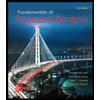
During the peak hour, an urban freeway segment has a traffic flow of 6,000 veh/h, with 4,000 vehicles with one occupant and 2,000 vehicles with two occupants. The freeway has five lanes, four of which are unrestricted opening to all vehicles regardless of vehicle occupancy and one lane that is restricted for use by vehicles with two occupants. Link performance functions for the length of this freeway segment are tu = 30+ 0.5vu for the unrestricted lanes and tr = 20+2vr for the restricted lane, where t’s are in minutes and v’s are in 1,000 vehicles. Solve for the distribution of traffic among the lanes using the SO principle and compare the savings in person hours relative to a UE solution, assuming that the compliance is perfect and that no single-occupant vehicles use the restricted lanes.
Trending nowThis is a popular solution!
Step by stepSolved in 6 steps with 6 images

- A long segment of suburban freeway is to be designed on level terrain. The level segment, however, is followed by a 4.5% grade, 2.0 miles in length. If the DDHV is 2,500 vehicles per hour with 15% trucks (standard mix), how many lanes will be needed on the (A.) Upgrade, (B.) Downgrade, (C.) Level terrain segment to provide for level of service C? Lane widths and lateral clearances may be assumed to be 12 feet and 6 feet, respectively. Ramp density is expected to be 1.0 ramps per mile. The PHF is 0.92. Good weather, no incidents, no work zones, and regular users of the facility may be assumed.arrow_forwardA 5% upgrade on a six-lane freeway (three lanes in each direction) is 1.25 mi long. On this segment of freeway, there is 3% SUTS and 7% TTs, and the peak-hour factor is 0.90. The lanes are 12 ft wide, there are no lateral obstructions within 6 ft of the roadway, and the total ramp density is 1.0 ramps per mile. What is the maximum directional peak-hour volume that can be accommodated without exceeding LOS C operating conditions in veh/h? Round of your answer to whole number. Blank 1arrow_forwardConsider the problem of traffic flow on a three-lane (one direction) freeway which can be described by the Greenshields model. One lane of the three lanes on a section of this freeway will have to be closed to undertake an emergency bridge repair that is expected to take several hours. It is estimated that the capacity at the work zone will be reduced by 30 percent of that of the section just upstream of the work zone. The mean free flow speed of the highway is 60 mi/h and the jam density is 130 veh/mi/ln. It is estimated that the demand flow on the highway during the emergency repairs is 86 percent of the capacity. Using the deterministic approach, determine the following for the expected repair periods of 1 h, 1.5 h, 2.5 h, 2.75 h, and 3 h. (a) the maximum queue length (in veh) that will be formed 1 h veh1.5 h veh2.5 h veh2.75 h veh3 h veh (b) the total delay (in h) 1 h h1.5 h h2.5 h h2.75 h h3 h h (c) the number of vehicles that will…arrow_forward
- Problem 2. New freeway is being designed on a level terrain, free-flow speed 70 mph 12-ft lanes, 6-ft lateral clearance Peak hour volume 2700 veh, 12% heavy vehicles PHF = 0.92 FIND: Number of lanes for LOS Carrow_forwardAn existing six-lane divided multilane highway with a field-measure free-flow speed of 45mph serves a peak-hour volume of 4,000 vehicles per hour, with 10% trucks (50% SUT, 50% TT). The PHF is 0.88. The highway has generally rolling terrain. What is the likely level of service for this segment? Good weather, no incidents, no work zones, and regular drivers may be assumed.arrow_forward

 Structural Analysis (10th Edition)Civil EngineeringISBN:9780134610672Author:Russell C. HibbelerPublisher:PEARSON
Structural Analysis (10th Edition)Civil EngineeringISBN:9780134610672Author:Russell C. HibbelerPublisher:PEARSON Principles of Foundation Engineering (MindTap Cou...Civil EngineeringISBN:9781337705028Author:Braja M. Das, Nagaratnam SivakuganPublisher:Cengage Learning
Principles of Foundation Engineering (MindTap Cou...Civil EngineeringISBN:9781337705028Author:Braja M. Das, Nagaratnam SivakuganPublisher:Cengage Learning Fundamentals of Structural AnalysisCivil EngineeringISBN:9780073398006Author:Kenneth M. Leet Emeritus, Chia-Ming Uang, Joel LanningPublisher:McGraw-Hill Education
Fundamentals of Structural AnalysisCivil EngineeringISBN:9780073398006Author:Kenneth M. Leet Emeritus, Chia-Ming Uang, Joel LanningPublisher:McGraw-Hill Education
 Traffic and Highway EngineeringCivil EngineeringISBN:9781305156241Author:Garber, Nicholas J.Publisher:Cengage Learning
Traffic and Highway EngineeringCivil EngineeringISBN:9781305156241Author:Garber, Nicholas J.Publisher:Cengage Learning





